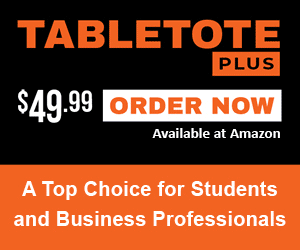
The benefits, risks and future of online learning
When you were in high school, you probably had a very defined idea of what college would be like. More than likely, it involved a sprawling campus, large lecture halls with an elderly professor directing the discussion and dormitories filled with co-eds. However, the recent surge of online classes over bricks and mortar institutions, as well as entire universities existing solely online, seems to suggest a move towards an entire world of online education, a world that may compete or even replace the traditional view of place-based education.
Bill Gates weighed in on the discussion earlier this year at the Technonomy Conference in Lake Tahoe, California. He asserted, “College, except for the parties, needs to be less place-based.” Is Gates the voice for a new movement in education or is he placing too much stock in technology? Is the concept of the campus-less college the next logical step in technology-based education, or would such an approach to education be cheating students out of the college experience?
Online learning actually offers several advantages for undergraduate students, according to Terrence Thomas, executive vice president of marketing at Earnmydegree.com, a web portal that connects students with online degree programs.
“It’s flexibility, it’s convenience, it’s structured for individuals who have to work,” he said.
Students who work part-time, or those who cannot register for a regular class because of a schedule conflict, can take a class online. Even students studying abroad can often take courses at their university from their host country, Thomas added.
Yet, there are also challenges, according to Michael Frank, PhD, vice-provost and dean of the University of Maryland of University College’s Graduate School of Management and Technology.
“Online study demands significant self-discipline, focus, and the ability to self-motivate and manage one’s time. There’s no teacher looking over your shoulder,” he said.
On average, online courses require more reading and writing than face-to-face courses because lectures, assignments, and guidance from teachers and classmates alike is usually presented in written form, he added.
According to Grand Valley State University student, Stephen Iveson, web-based and campus-less university programs significantly restrain the networking aspect of post-secondary education.
“Sure, you can meet a small fraction of peers at a party for students of a campus-less school, but you don’t meet the diversity of people you would in various classrooms; people who don’t attend parties, or would simply work and complete course work were it web-based,” Iveson said.
Iveson’s thoughts echo those of Dr. Andrew Hacker, who criticized online universities in general and for-profit institutions specifically on the The Colbert Report in August. For Hacker, online universities don’t encourage students to learn.
Thomas has a different take on the idea. In an online environment, students have to interact and have to post, whereas in a large auditorium it is much harder for students to participate, especially for introverts.
Moreover, “There are now many visual and audio mediums that are commonly used in an online classroom so that the experience a student receives is very deep and rich,” Frank said.
At the University of Maryland, according to Frank, online students can chat online in real-time, communicate by e-mail and post comments and questions to discussion boards and blogs. Online classes usually allow students time to collect their thoughts, read and research before posting to a discussion or sending an e-mail, unlike when asked to participate in a real classroom on the spot.
Kate Siegel, a graduate and faculty member of California State Northridge, has an open-minded outlook.
“Will it be right for everyone? Appropriate for all disciplines? Probably not. But being willing to entertain alternative delivery methods is great, and in some cases may be vital to keeping an institution relevant, or even financially viable,” she said.
The University of Phoenix’s site also offers some valuable information regarding the school’s online courses. It states that students are required to attend classes five days a week and must participate at least four days a week. Just as students are required to be responsible and accountable, so are professors. They, too, are required to be in class five days a week to offer help to any student who needs it.
Now, for those concerned about not forming relationships with professors or becoming a faceless username, the University of Phoenix assures its potential students that online class sizes are kept small – between 14 to 20 students – to ensure that students get the attention they need and deserve.
In addition, the University of Phoenix states that it assesses its online students to determine cognitive and affective achievement.
In fact, according to the U.S. Department of Education and a recent study, “Use of Education Data at the Local Level: From Accountability to Instructional Improvement,” on average, students who took all or part of their class online performed better than their traditionally educated counterparts.
Also according to the survey, students who take a hybrid course combining online instruction with traditional instruction, actually perform best.
As Siegel said, while it may not make sense to change the entire education industry, it would be a mistake to write off online learning as a whole. “I think that it, like anything that facilitates learning, is a fantastic idea.”
Not all of future learning is likely to be online, Thomas said. But “it will continue to grow,” he added.



















